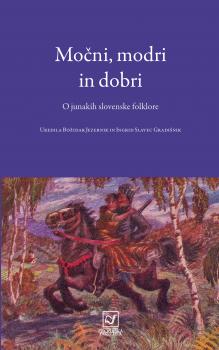Močni, modri in dobri: Junaki v slovenski folklori
Keywords:
folklore heroes, Slovenian space, national identity, everyday lifeSynopsis
In the study of folklore heroes, an open disciplinary approach is essential. Research to date namely shows that heroes are created on the basis of mythological, historical, religious worlds, that they exist not only in folklore in the classic sense, but also in literature, the fine arts, the media. This is why clear boundaries cannot be drawn between, for example, the historical, mythological, literary, or folk hero. Consequently the ranks of folklore heroes are mostly joined by individuals engraved into some, or several, of the forms of folklore expression. In other words: “The folk hero is not a historical personality but the image or representation of that individual within folklore” (Seal and Kennedy White 2013: xxix). Analogous holds true for the literary heroes who were folklorised, or the saints who were received especially well by the people. In the opposite process, “true” folk heroes have also undergone literarisation, entering into spheres of film, contemporary popular culture, and other aspects of the public consciousness. Becoming, perhaps, folklore the more.
Chapters
-
»Več kakor eni drugi človik«
-
Razvojna pot in percepcija izročil o Kralju Matjažu in Petru Klepcu
-
Kralj Matjaž in transformativna moč domišljije
-
Lepa Vida in Kralj Matjaž: Prek arhetipizacije v kanonizacijo
-
Peter Klepec – silni slovensko-hrvaški junak
-
Po Krpanovih sledeh: Martin Krpan – junak na robu
-
Kofčárjov Štefan – bohinjski folklorni junak
-
Manifestacije moči pri slovenskih folklornih junakih
-
Junaki in junakinje na poslikanih panjskih končnicah
-
Novoletna jelka in dedek Mraz
-
Od bedaka do junaka: Alpinist
-
Summary
Downloads


